If Canon is number one on the SLR market, the two spot has been held firmly for some time by its long-time rival, Nikon. Said company also has a wide product range, starting with purely professional units, continuing to semi-pro SLRs and finally, the amateur models available to the general public. We will now introduce one product from the latter group – the Nikon D5000.
Regarding sensor size, Nikon offers two basic types within its product range: full frame professional SLRs with a cine-film frame sensor size (labeled FX) and SLRs with a smaller sized chip (23.6 x 15.8 mm), meaning the APS-C category, with Nikon using its own terminology – DX. In this case, the crop factor is 1.5x. At present, Nikon offers seven different SLRs, where only the lowest model, the D3000, uses the older CCD sensor. All of the others, including the reviewed Nikon D5000, make use of the CMOS type sensor.
 |
 |
The Nikon D5000 can be considered a relatively small SLR in classic black coating, with only a small touch of red in the grip area below the shutter. It is a small addition to the design typical of Nikon. Like other amateur SLRs, the body is plastic with a relatively bulky grip for the right hand on the front side and for a safer hold, there is a rubber area on the back side ‘under your thumb.’ Taking into consideration its small size, the ergonomy itself is quite excellent – even users with bigger hands will appreciate this camera – an area where Nikon certainly does not lose a single point for its reputation.
 |
||||||||||||
|
||||||||||||
A typical indicator of an amateur SLR is the absence of a top mounted status display on the right side – here, the manufacturers usually place the circular regime select switch. Another ‘amateur’ characteristic is the presence of only a single Control Dial, on the top back side, for control purposes of the right hand thumb. Hence, on the top front side, you will only find the shutter with a circular ring for the on/off switch and two additional buttons: Info and a button with the ± symbol.
 |
|||||
|
In context with the sole control dial, the ± button represents a very important control element – it switches between the different functions. For example, if you are taking photos in the shutter priority mode (mode A), you normally use the Dial to set the intensity. However, once you need to use exposure compensation, you press the ± button and make needed changes with the control dial. The same applies when using the manual mode, where you compensate for the exposure with the control ring as usual, but by pressing the ± button, you now control the shutter.
 |
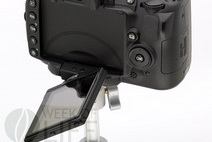 |
What really stands out, and only a handful of SLRs are equipped with, is the structural design of the LCD display – the flip-down–and-swivel attribute. In addition to other positions, it allows for turning the ‘backside up’, effectively ensuring safe transportation of the camera and its LCD display. However, while most D-SLRs are articulated on the left of the rear side, Nikon placed the D5000’s articulation at the bottom. There is no obstacle for ordinary usage, though a problem might arise once you attach the camera to a tripod to take a self-portrait.
 |
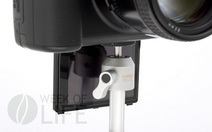 |
The top of the tripod prevents that kind of application of the camera and the LCD display. The more common use of the articulation on the left, in which the display rotates on the side of the camera, seems better and more practical. It is not only a matter of the inability to take self-portraits. The flip-down-and-swivel display, along with Live View, is also often used for visual control of the exposure compensation during product photography as well as studio photography in general.
Users of the Week of Life medium will have to settle for taking self-portraits by their own hand.
In that case, the LCD display is useful.
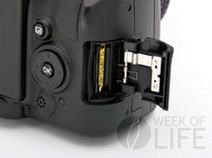 |
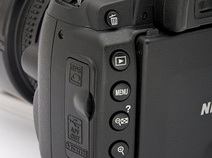 |
As it is the case with most amateur SLRs, The Nikon D5000 stores image data and videos on SD/SDHC memory cards. If you plan to film video sequences, we recommend using Class 6 and higher memory card types that are sufficient in speed for the large data inflow of HD video. Be prepared to lose automatic focusing in this mode and get ready for mono sound only. Under the connector cap, you can find an HDMI interface for a direct connection to your HD TV and instant playback of video sequences from the camera.
Certain limitations of this model arise in the scope of its exchangeable optics. The Nikon D5000 does not have an autofocus motor installed in its body. Therefore, when using older motor-less lenses, forget about automatic focusing. The camera will work; you’ll just have to focus manually. Lenses with their own motor, like Nikkor AF-S type optics and ones from ‘3rd party manufacturers’ (i.e. Sigma, Tamron), support autofocus without any problems.
Besides the obligatory JPEG, Nikon D5000 enables image data to be stored in wireless RAW format. In combination with company software Nikon Capture NX2, it is possible to gain an unmatched amount of information out of the RAW format and fix a bundle of image defects. When developing from the RAW format with the NX2 for instance, you can forget all about chromatic dispersion – the software perfectly and completely gets rid of it, without any kind of image quality degradation. The only flaw is the absence of this pricy software in the basic Nikon D5000 kit.
Screenshots of the menu of Nikon D5000
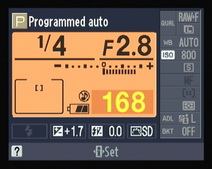 |
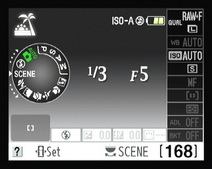 |
 |
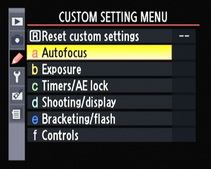 |
 |
 |
Overall evaluation
Even though we have pointed out a few limitations of this camera in this review, it is still an excellent product in its class, with a great price/efficiency ratio. There are several available kits for beginners; one of these, with a stabilized lens and basic zoom 18-55mm (after crop factor 1.5x, it is approx. 27-80mm), is sold for the agreeable amount of $652.66. If you are not already an owner of a compatible lens, buying the body and the lens separately will not be worth it.
Common Price (at the time of this review being published): $652.66
Basic Technical Data for Nikon D5000
Sensor
CMOS 23.6 × 15.8 mm (crop factor 1.5 ×)
12.2 Mpx (4,288 × 2,848 px)
Light sensitivity ISO 100 to 6,400
Shutter
Shutter speed 30–1/4,000 s
Flash X-sync 1/200 s
Burst buffer 4 fps
Optics
Exchangeable lenses of the Nikon F standard (automatic focusing only compatible with lenses having their own autofocus motor)
Autofocus
11-point
Live View
Yes, real time live view of the scene from the CMOS image sensor
Memory medium
SD/SDHC
Data formats
Image: JPEG, RAW (NEF)
Video: AVI
Video
1,280 × 720 px, 24 fps
640 × 424 px, 24 fps
320 × 316 px, 24 fps
Mono sound
LCD
Screen size 2.7” (68 mm)
230,000 px
Power supply
Li-Ion battery
Dimensions and weight (body only)
126 × 106 × 71 mm (w × h × d)
610 g (incl. battery and memory card)
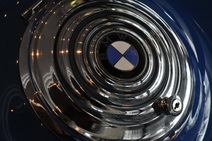 |
 |
 |
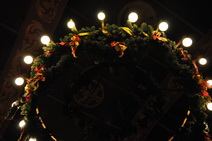 |
 |
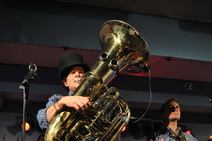 |
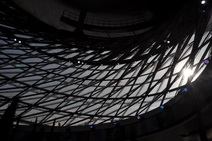 |
 |
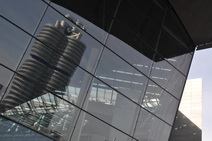 |
 |
 |
 |
